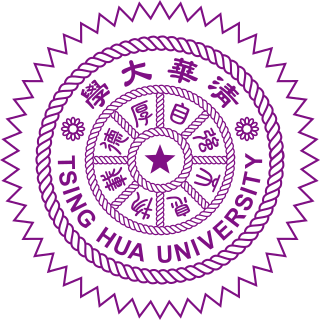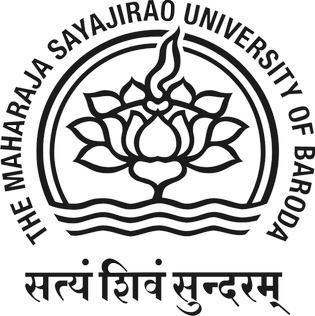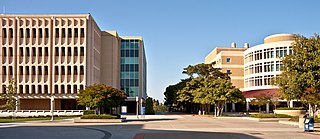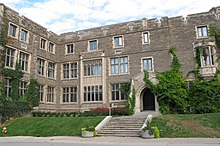
Brookhaven National Laboratory (BNL) is a United States Department of Energy national laboratory located in Upton, New York, a hamlet of the Town of Brookhaven. It was formally established in 1947 at the site of Camp Upton, a former U.S. Army base on Long Island. Located approximately 60 miles east of New York City, it is managed by Stony Brook University and Battelle Memorial Institute.

National Tsing Hua University (NTHU) is a public research university in Hsinchu, Taiwan. It was first founded in Beijing. After the Chinese Civil War, president Mei Yiqi and other academics fled with the retreating Nationalist government to Taiwan, where they founded National Tsing Hua University in 1956. The university remains independent and distinct from Tsinghua University in Beijing.

The University of Alberta is a public research university located in Edmonton, Alberta, Canada. It was founded in 1908 by Alexander Cameron Rutherford, the first premier of Alberta, and Henry Marshall Tory, the university's first president. It was enabled through the Post-secondary Learning Act. The university is considered a "comprehensive academic and research university" (CARU), which means that it offers a range of academic and professional programs that generally lead to undergraduate and graduate level credentials.

Leipzig University, in Leipzig in Saxony, Germany, is one of the world's oldest universities and the second-oldest university in Germany. The university was founded on 2 December 1409 by Frederick I, Elector of Saxony and his brother William II, Margrave of Meissen, and originally comprised the four scholastic faculties. Since its inception, the university has engaged in teaching and research for over 600 years without interruption.

Bertram Neville Brockhouse, was a Canadian physicist. He was awarded the Nobel Prize in Physics "for pioneering contributions to the development of neutron scattering techniques for studies of condensed matter", in particular "for the development of neutron spectroscopy".

McMaster University is a public research university in Hamilton, Ontario, Canada. The main McMaster campus is on 121 hectares of land near the residential neighbourhoods of Ainslie Wood and Westdale, adjacent to the Royal Botanical Gardens. It operates six academic faculties: the DeGroote School of Business, Engineering, Health Sciences, Humanities, Social Science, and Science. It is a member of the U15, a group of research-intensive universities in Canada.

Maharaja Sayajirao University of Baroda, formerly Baroda College, is a public university in the city of Vadodara, Gujarat, India. Originally established as a college in 1881, it became a university in 1949 after India's independence. It was later renamed after its benefactor Maharaja Sayajirao Gaekwad III, the former ruler of Baroda State.

The University of Rostock is a public university located in Rostock, Mecklenburg-Vorpommern, Germany. Founded in 1419, it is the third-oldest university in Germany. It is the oldest university in continental northern Europe and the Baltic Sea area, and 8th oldest in Central Europe. It was the 5th university established in the Holy Roman Empire.

The McMaster Faculty of Engineering is a faculty located at McMaster University in Hamilton, Ontario. The faculty was established in 1958 and was the first engineering program to developed problem-based learning curriculum. It currently has seven departments in chemical engineering, civil engineering, computing and software, electrical and computer engineering, engineering physics, material science and engineering and mechanical engineering. The faculty offers bachelors, masters, and doctoral degrees.
The University of British Columbia (UBC) is a Canadian public research university with campuses in Vancouver and Kelowna, British Columbia. The following is a list of faculties and schools at UBC.

The National Institute of Science Education and Research (NISER) is an autonomous research institute in Jatani, Odisha, India, aided by Department of Atomic Energy. The institute is affiliated by Homi Bhabha National Institute. Former Prime Minister Manmohan Singh laid the foundation stone on August 28, 2006. Government of India earmarked an initial outlay of ₹823.19 crore (US$99 million) during the first seven years of the project, starting in September 2007. It was ranked second in the country by the Nature Index 2020.
The Faculty of Science is one of eleven faculties at McGill University in Montréal, Québec, Canada. With roots tracing back to 1843, the Faculty currently offers several undergraduate and graduate programs ranging from Earth Sciences to Mathematics to Neuroscience.
The Wiess School of Natural Sciences is an academic school at Rice University in Houston, Texas. It comprises the departments of BioSciences ; Chemistry; Earth, Environment and Planetary Sciences; Kinesiology; Mathematics; and Physics and Astronomy. Rice is well known for its groundbreaking research in nanotechnology. As well as undergraduate in instruction, the school also supports a professional science master's program. One of Rice's greatest minds and pioneers of the field was Richard Smalley, the Norman Hackerman Professor of Chemistry and Professor of Physics and Astronomy. Smalley received the Nobel Prize in 1996 for the discovery buckminsterfullerene, an allotrope of carbon commonly referred to as "buckyballs".

The College of Sciences at the University of Texas at San Antonio in San Antonio, Texas is a science and research education college. The college hosts more than 6000 students enrolled in fifteen undergraduate programs and nineteen graduate programs. The eight departments employ over 300 tenure and non-tenure track faculty members. Students collaborate through programs with local external research institutions including UT Health Science Center, Southwest Research Institute and the Southwest Foundation for Biomedical Research.
Academics at the Massachusetts Institute of Technology are organized into 6 divisions containing 32 academic departments or faculties along with many interdisciplinary, affiliated, and intercollegiate research and degree programs. The Schools of Engineering, Science, Sloan School of Management, Humanities, Arts, and Social Sciences, Architecture and Urban Planning, and the Whitaker College of Health Sciences and Technology.

The School of Physical Sciences is an academic unit of the University of California, Irvine (UCI) that conducts academic research and teaching in the field of physical sciences. It offers both pre-professional training and general education in the departments of chemistry, earth system science, mathematics, and physics and astronomy. The school enrolls 1,400 undergraduate and graduate students and is one of the top schools in the nation in the number of degrees it confers in the area of physical sciences. It also offers specializations such as biochemistry, statistics, math for economics, applied and computational mathematics, astrophysics, applied physics, biomedical physics, and education. In 1995, the school gained international prominence when Frank Sherwood Rowland, a professor in chemistry and Frederick Reines, a professor in physics, won the Nobel Prize in their respective fields. It was the first time two people won the prize in the same year in two different fields at the same public university.

The College of Engineering (CoE) is one of the three undergraduate colleges at the University of California, Santa Barbara. The College offers a mid-sized, interdisciplinary environment where innovation drives the development of both fundamental science and applied technology solutions.
The University of Colombo currently has seven faculties with 41 academic departments and two interdependent schools with five academic departments. All faculties and schools carries out courses of study and research in both graduate and undergraduate studies. In addition, the university has several institutions that specialize in different areas of research.
The College of Science at Virginia Tech contains academic programs in eight departments: biology, chemistry, economics, geosciences, mathematics, physics, psychology, and statistics, as well as programs in the School of Neuroscience, the Academy of Integrated Science, and founded in 2020, an Academy of Data Science. For the 2018-209 academic year, the College of Science consisted of 419 faculty members, and 4,305 students, and 600 graduate students. The college was established in July 2003 after university restructuring split the College of Arts and Sciences, established in 1963, into two distinct colleges, the other half becoming the College of Liberal Arts and Human Sciences. Lay Nam Chang served as founding dean of the College of Science from 2003 until 2016. In 2016, Sally C. Morton was named dean of the College of Science. Morton served in that role until January 2021, when she departed for Arizona State University and Ronald D. Fricker—senior associate dean and professor in the Department of Statistics—was named interim dean of the College. In February 2022, Kevin T. Pitts was named the third official dean of the College of Science.
The William J. and John F.Kennedy College of Sciences at the University of Massachusetts Lowell is so named for the Kennedy family and their contributions to the campus. John F. Kennedy is an alumnus of the Lowell Technological Institute Class of 1970. The Lowell Technological Institute merged with the Lowell State College to become the University of Lowell in 1972. It joined the UMass system in 1991 to become UMass Lowell.













